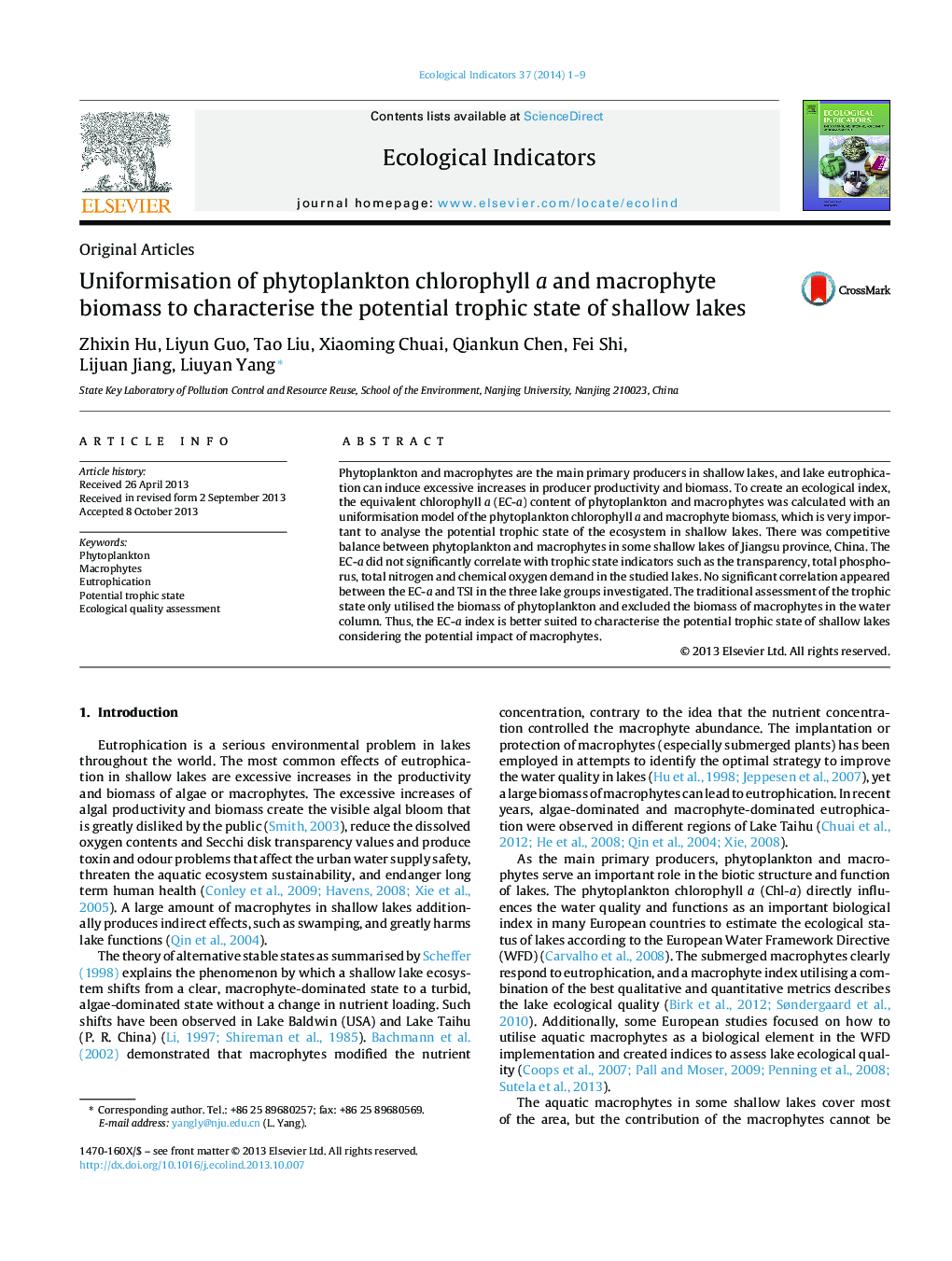| Article ID | Journal | Published Year | Pages | File Type |
|---|---|---|---|---|
| 4373245 | Ecological Indicators | 2014 | 9 Pages |
•We conceive an uniformisation model of chlorophyll a and macrophyte biomass.•We use the equivalent chlorophyll a (EC-a) content of the two indices.•There is competitive balance between phytoplankton and macrophytes.•We find no significant correlation between EC-a and TSI in the three lake groups.•EC-a is an useful index to characterise the potential trophic state of lakes.
Phytoplankton and macrophytes are the main primary producers in shallow lakes, and lake eutrophication can induce excessive increases in producer productivity and biomass. To create an ecological index, the equivalent chlorophyll a (EC-a) content of phytoplankton and macrophytes was calculated with an uniformisation model of the phytoplankton chlorophyll a and macrophyte biomass, which is very important to analyse the potential trophic state of the ecosystem in shallow lakes. There was competitive balance between phytoplankton and macrophytes in some shallow lakes of Jiangsu province, China. The EC-a did not significantly correlate with trophic state indicators such as the transparency, total phosphorus, total nitrogen and chemical oxygen demand in the studied lakes. No significant correlation appeared between the EC-a and TSI in the three lake groups investigated. The traditional assessment of the trophic state only utilised the biomass of phytoplankton and excluded the biomass of macrophytes in the water column. Thus, the EC-a index is better suited to characterise the potential trophic state of shallow lakes considering the potential impact of macrophytes.
